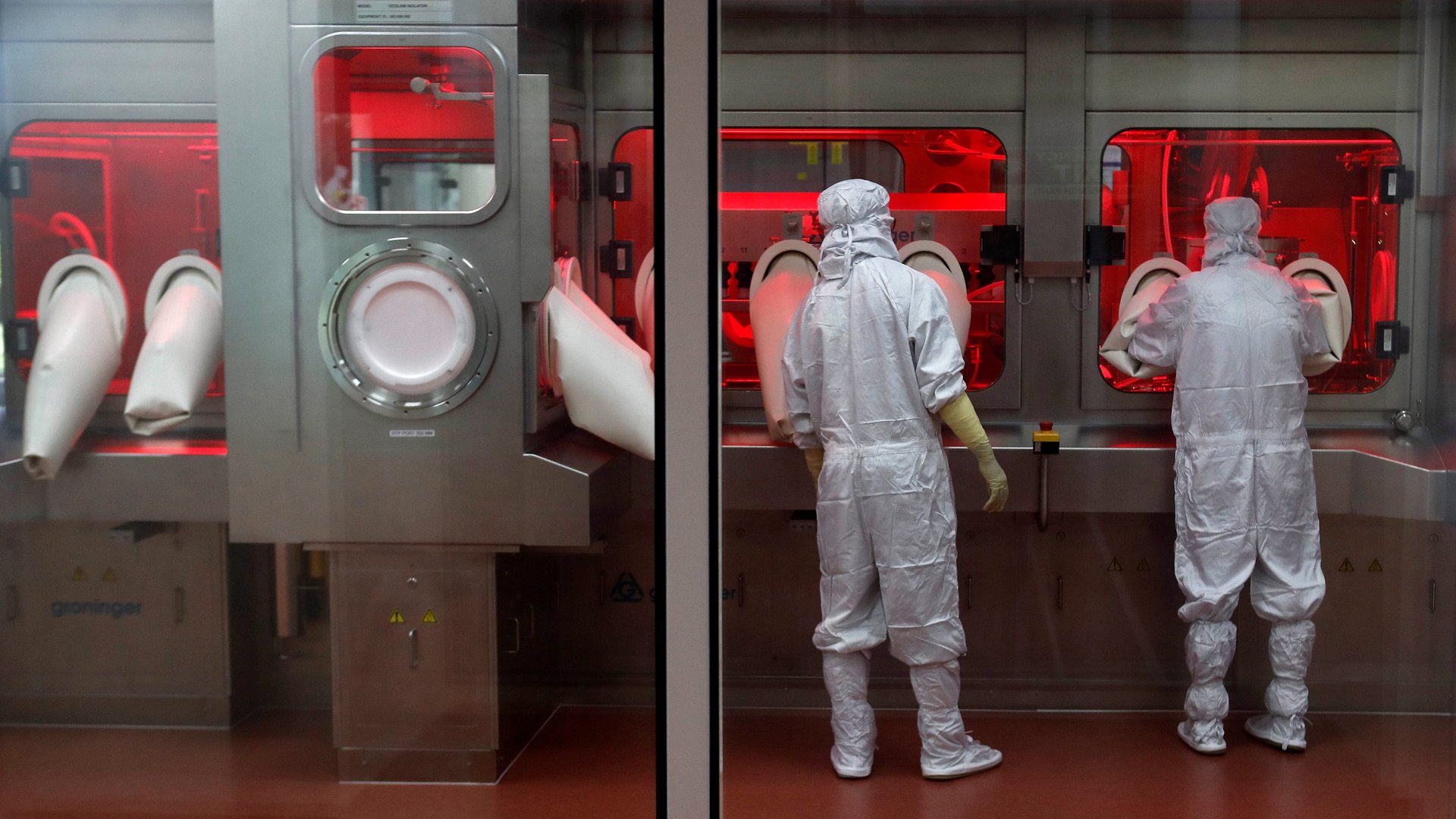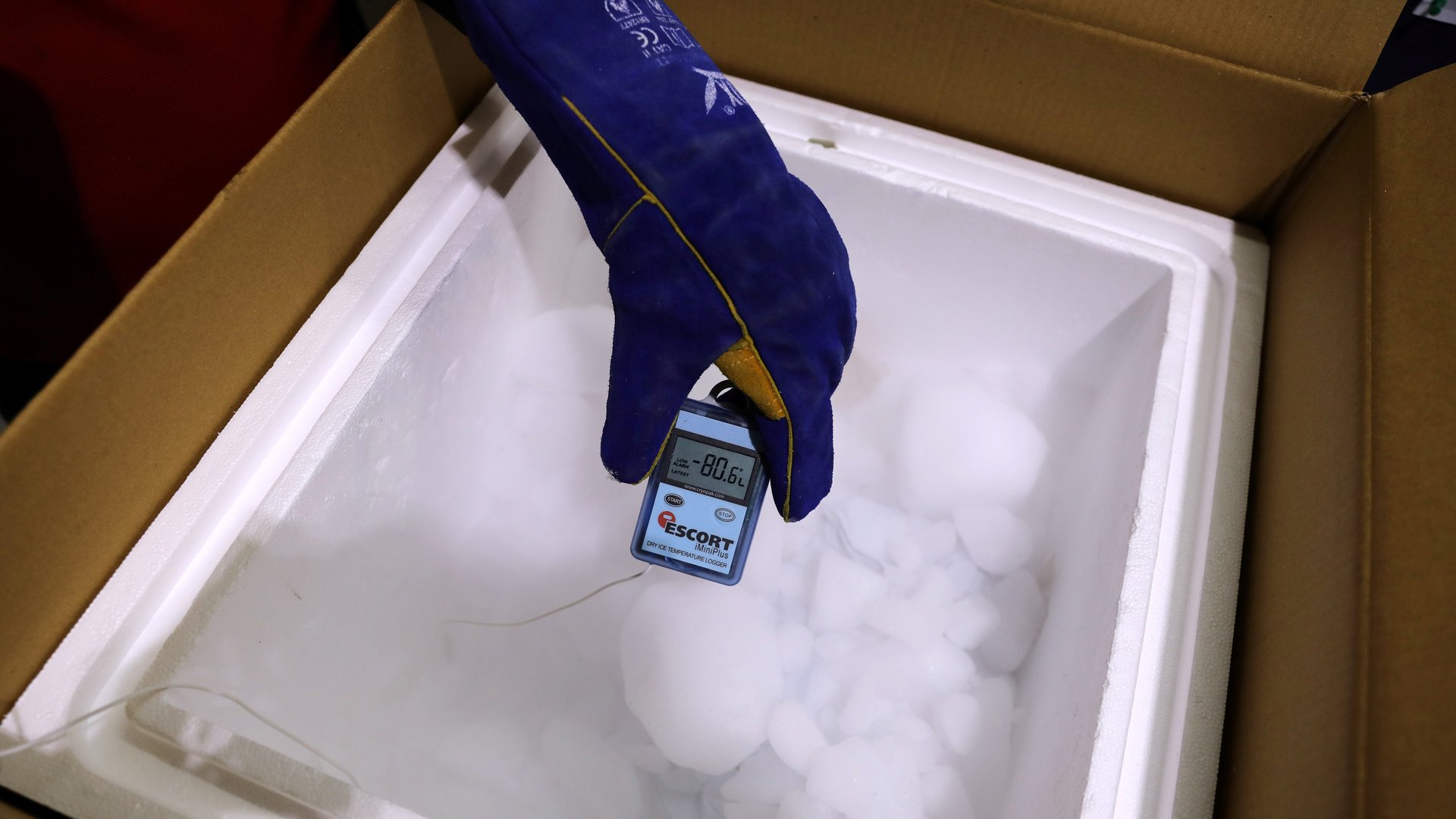India’s bull semen industry could be used to fight Covid-19
The Covid-19 pandemic has seen many companies pivot to producing personal protective equipment, ventilators, and masks. Now the Indian bull semen industry is looking at whether its refrigerated supply network—known as the cold chain—can help with vaccine distribution efforts.


The Covid-19 pandemic has seen many companies pivot to producing personal protective equipment, ventilators, and masks. Now the Indian bull semen industry is looking at whether its refrigerated supply network—known as the cold chain—can help with vaccine distribution efforts.
The Covid-19 vaccines from Pfizer and Moderna need to be kept at extremely low temperatures due to their mRNA genetic material. The AstraZeneca vaccine needs to be kept cold, but not as cold the other two. The tropical temperatures that cover much of India create a challenge to the upcoming nationwide vaccination effort. It’s a logistical challenge the country’s bull semen industry is familiar with and wants to help solve.
How bull semen transport works
Bull semen is a crucial part of the global dairy industry’s ability to maintain sufficient milk output and help farmers breed better, more productive animals. Modern cattle breeding is done by artificial insemination because it is often quicker, simpler, and more efficient for dairy farmers than natural breeding. The productivity of Indian cows is steadily increasing.
After the raw material is collected from bulls, it is packaged and frozen in vials or straws for easier insertion into cows. The process of freezing semen and transporting it involves temperatures as low as -196°C (-321°F) through the use of liquid nitrogen. Frozen shipments of semen are sold around the world, and straws are currently used for breeding in most Indian states through 56 bull stations spread around the country. In the most recent year of reported statistics, India inseminated 75.8 million animals.
Keeping the vaccine cold in transit to remote areas
The Moderna and Pfizer Covid-19 vaccines require storage temperatures of -20 and -70°C. Like bull semen, the viability of the new vaccines would be lost if stored at normal room temperatures.

India’s dairy industry keeps its cold chain for bull semen reliable and widely accessible through a steady supply of liquid nitrogen.
What sets India’s bull semen industry apart from insemination industries in other countries is how it manages the logistics of reaching farms in remote areas. Paraveterinary workers travel to villages on two-wheeled vehicles with 3-liter (0.79 gallon) containers containing over 700 straws of frozen semen, according to Ashok Pande, the leader of scientific research and livestock development at BAIF, an Indian charity focused on agriculture development.
Keeping the vaccine cold is just one part of a complex system
While India’s bull semen industry is successful and growing, its scope is still much smaller than a national effort to vaccinate a population of 1.4 billion people during a global pandemic. India has 300 million people who—by way of profession, age, or medical history—are deemed as priority candidates for vaccination.
Union health secretary Rajesh Bhushan, who co-chairs the National Expert Group on Vaccine Administration of Covid-19 told the Indian Express that additional cold storage equipment would be provided to the states beginning on Dec. 10, as the current capacity is only enough for storing vaccines for 30 million healthcare and frontline workers.
Even if Indian health and agriculture officials are able to convert much of the cold chain being used for delivery of bull semen for storage and distribution of Moderna’s vaccine, that would solve just one aspect of a vaccination drive. The logistics of producing, purchasing, storing, distributing, tracking, and keeping secure more than a billion doses of vaccines still remain after health and government officials figure out how to keep it cold.